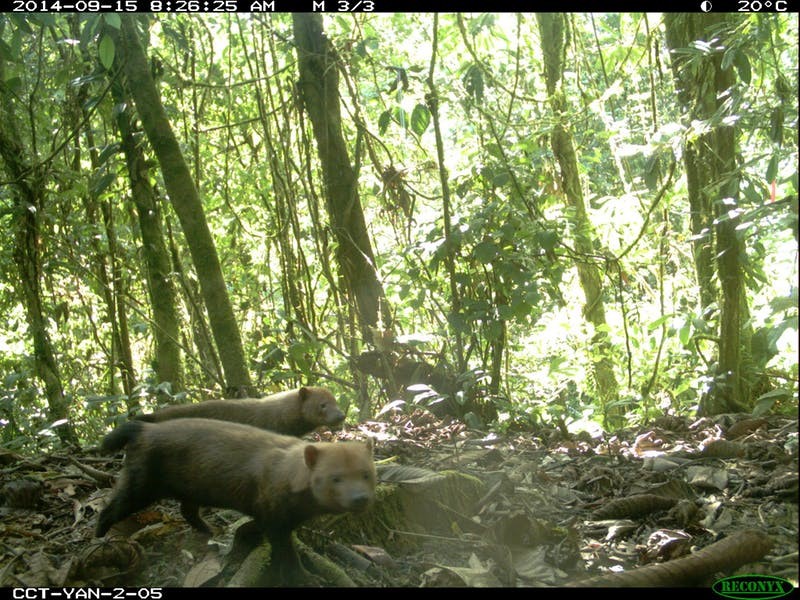Technology to the Rescue: making sense of millions of wildlife pictures for conservation
The paper ‘Wildlife Insights: A Platform to Maximize the Potential of Camera Trap and Other Passive Sensor Wildlife Data for the Planet’ has been chosen by the Editor-in-Chief as the latest addition to the EC Perspectives Collection
I became a conservation biologist because of my passion for wildlife. In college, I spent six months in Colombia’s Amazon basin studying spider monkeys. One day, as I was tracking them, I came upon a pack of very strange-looking dogs. They had short ears, bushy tails, stubby legs and flattened snouts. When I returned to camp, I described these creatures to my more experienced fellow researchers. I expected knowing nods. Instead, all I got were skeptical stares. They dismissed my sighting, saying I must have just seen a group of domestic dogs.
Twenty years later, working on a biodiversity monitoring program at Conservation International, I was examining some of the first camera trap images collected at one of our sites in Peru. This image caught my attention:

It was the bush dogs (Speothos venaticus) I had spotted so many years ago. Though they live throughout Central and South America they are very rarely seen. They spend much of their time in underground burrows and are considered near threatened by IUCN. Out of the 700,000 camera trap images we collected within the species range, only 260 showed an actual bush dog. It’s no wonder no one had believed me back then! My testimony could be dismissed, but the camera trap offered undeniable proof – even with a date and time stamp.
Unfazed by the elements, camera traps are our eyes in the forest – they snap pictures of wildlife day and night for months, capturing images of species that often elude even the most experienced field naturalists. Multiple camera traps can be deployed over large protected areas to monitor species populations, thereby providing data to understand biodiversity trends and impacts. They are a fantastic tool for conservationists, scientists and local communities that are trying to conserve and understand wildlife – especially at a time of transformative change in many ecosystems.
Although the use of camera traps has increased exponentially over the past decade, the development of tools to manage, process and analyze the images they produce has not kept up. This has created significant barriers that have prevented wildlife managers and others from making the most of the valuable data camera traps produce. These barriers include a long and tedious data processing pipeline; difficulty in sharing data with others due to the sheer volume of images (often resulting in siloed information); and a lack of intuitive tools to easily analyze information or extract insights. Furthermore, most existing camera trap hardware was not originally designed for science and conservation. It lacks basic environmental sensors, distance and speed measurement sensors, and global position system capabilities all of which help provide important insights.
In our paper “Wildlife Insights: A platform to maximize the potential of camera trap data and other passive sensor wildlife data for the planet” we describe a new technology solution that addresses these barriers. Wildlife Insights, which launched last year, uses artificial intelligence and an intuitive interface to quickly organize and process large amounts of images – 10-20 times faster than manual processing. It is built on a robust cloud platform where images and metadata can be easily shared for collaboration. It offers automated basic analyses to enable non-technical users to quickly extract insights from the data. Finally, it promotes the development and adoption of a new generation of hardware that fits the needs of the conservation community.
We see Wildlife Insights as a permanent infrastructure for camera trap data and other passive sensor data and discuss several strategies to achieve its long-term sustainability. Our goal is to ensure that wildlife managers use the most current and reliable information to design and implement conservation programs to ensure the future of wildlife.
Perhaps then, the elusive bush dog will have a chance to endure the ages.
The paper ‘Wildlife Insights: A Platform to Maximize the Potential of Camera Trap and Other Passive Sensor Wildlife Data for the Planet’ is available do download for free as part of our EC Perspectives Collection






